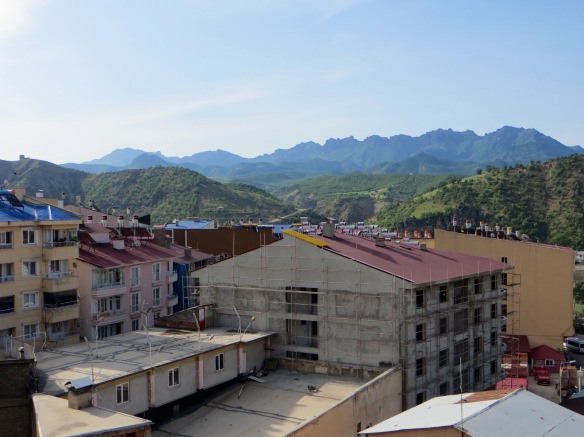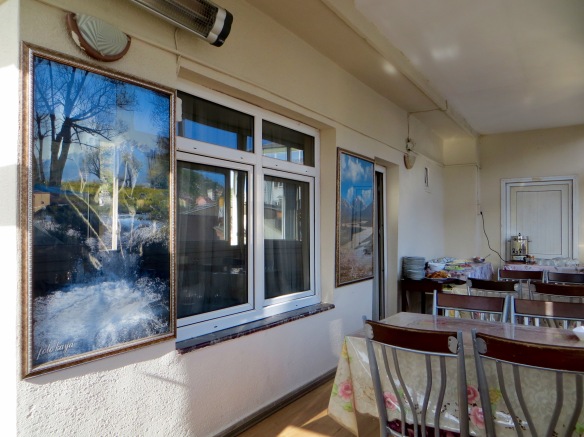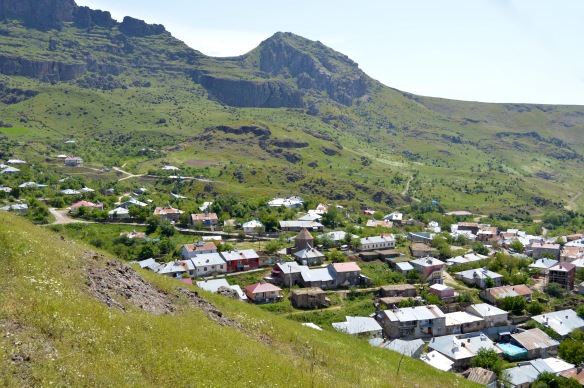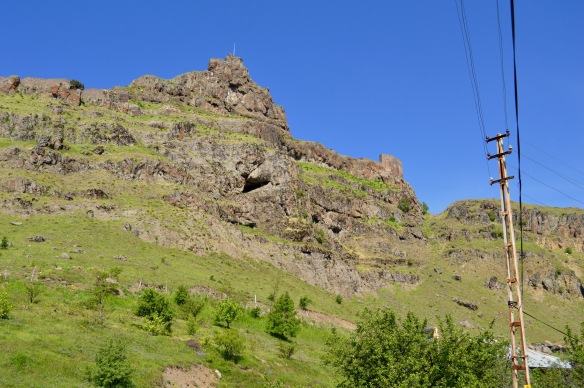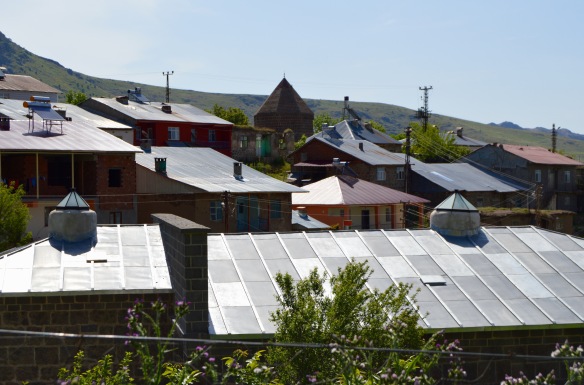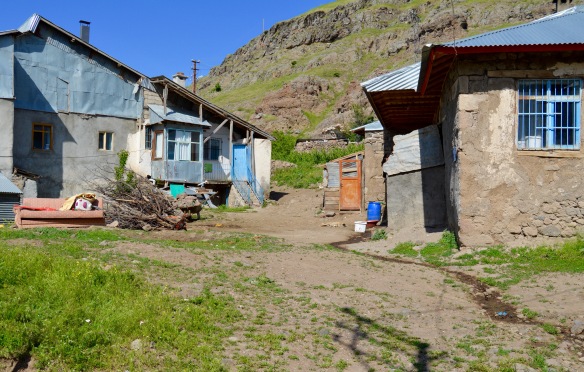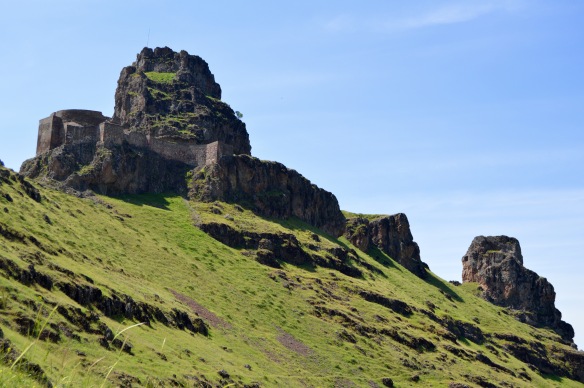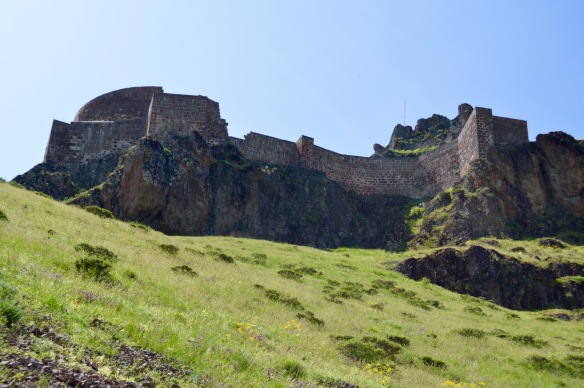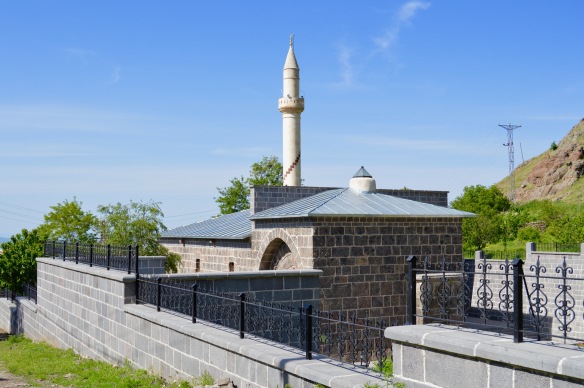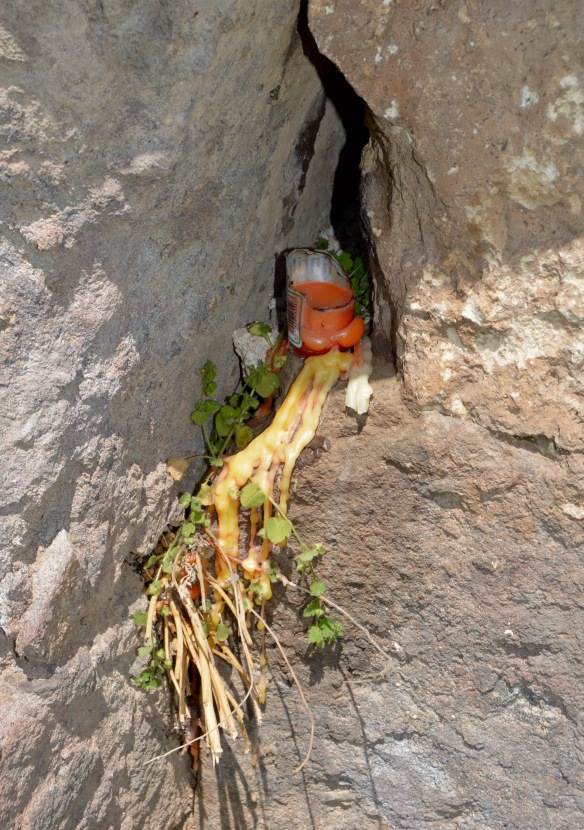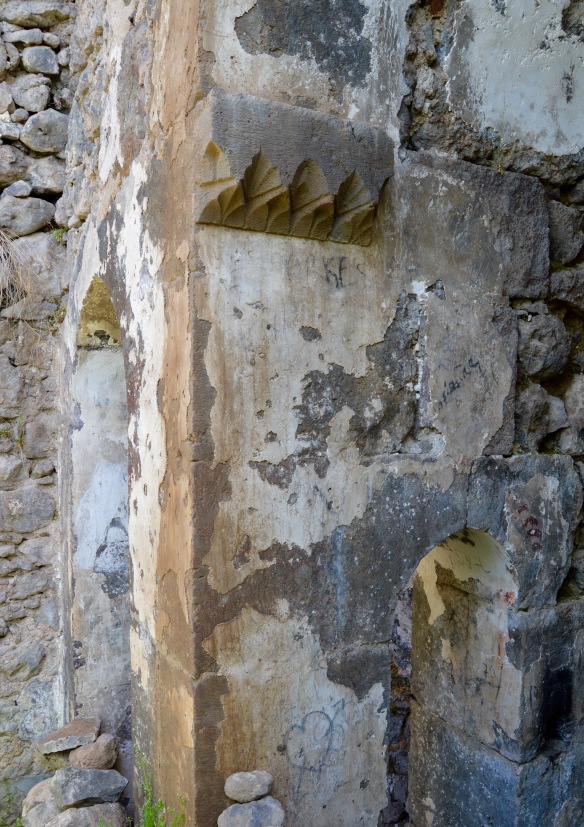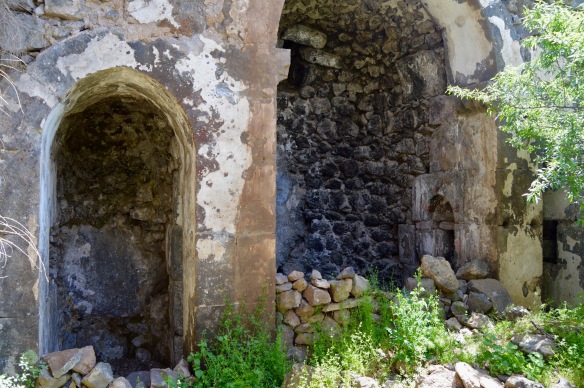During what was to be roughly 48 hours in and around Tunceli, I heard the adhan only once. There was a very ordinary modern Ottoman-style mosque in the town centre, but it was never very busy. Most people who used it were probably not indigenous; the were likely to be outsiders who had settled in the town for work purposes, either permanently or temporarily.
And it was definitely NOT the adhan that woke me at about 4.00am. I was startled awake by a far more interesting and rhythmic sound, that of an unaccompanied male voice repeating the same or a very similar phrase many times over. But there were other voices that repeated the phrase or phrases after the soloist. The other voices also sounded like those of males, but may have included a few women. At one point I thought I heard drums emphasising the rhythm, but it could have been human voices creating the sound. The chanting, which is the best way to describe what I heard, went on for about 20 minutes and it almost certainly came from a nearby cemevi. Because I did not hear the same thing the following morning at the same time, I assumed it must be something peculiar to the Monday concerned. Alternatively, were Alevis and/or Bektashis marking an important day in their cycle of festivals and commemorations, a cycle that differed significantly from the cycle of festivals and commemorations important to mainstream Sunni and Shia Muslims? Back home, because I found nothing significant about 25th May 2015 for Alevis or Bektashis, I concluded that what I heard was a routine practice confined to Mondays.
I knew that a minibus left for Mazgirt, my main destination for the day, at 7.00am, but, if I left that early, I would miss breakfast. As it was, Mazgirt was not a great distance from Tunceli, so an early start was not essential. I ate breakfast, which was neither as good as the best nor as bad as the worst during the trip. I enjoyed in particular the views south, east and north from the L-shaped room in which the food was served. However, a woman prepared the meal and the food included loose butter as white as Lurpak, a local cream cheese, boiled eggs and flat-bread still warm from the baker’s oven. The woman wore casual clothes of European character and no headscarf, as might have been expected in a hotel run by two men who appeared to be socialists or communists.
Because overnight I had had an upset stomach, I returned to my room for a fourth and last shit to clear the system (as I knew from past experience, with an upset stomach, regular shits were the best medicine and not medicine itself) and instantly felt a lot better.
At about 7.45am I left the hotel, walked to the bridge over the river carrying the road from Elazig to Pulumur and Erzincan, and made my way south toward Elazig and what I hoped would soon be the edge of town. But development persisted for a long way, so much so that I flagged a minibus to Tunceli University’s campus, which I knew was about 7 kilometres from the town centre. The minibus went past many new buildings, most of which could not be more than ten years old. Some of the buildings coalesced into a reasonably attractive residential area with apartment blocks rising about eight to a dozen storeys. The blocks were painted bright colours and the apartments looked comfortable. Every apartment had at least one balcony. Shops, offices, lokantas, bakeries and interior design and furniture stores occupied the ground floors, so the locality was a relatively self-sufficient suburb. However, vacant plots existed among the apartment blocks and they were covered with litter and building waste.
None of the female students in the minibus or on their way to the university by walking or using other transport wore a headscarf. They and their male companions could have been conveyed to almost any campus in the UK and looked very much at home.
I got off the minibus when it turned off the road to Elazig to ascend the hillside to access the campus. I walked a short distance along the main road to where an elderly couple were waiting for a minibus to Elazig that would travel via Pertek and the ferry that crossed the Keban Reservoir. The Elazig minibus arrived and, because it had the space, I went as far as where the road to Pertek branched from the much longer road to Elazig that I needed to follow to get to Mazgirt. Once again, the driver would not take any money for the fare.
I was now about 8 kilometres from the junction for Mazgirt and confident that the next lift would get me at least that far. Five minutes later, a van stopped and the driver and his companion said they were going to Mazgirt. The 11 kilometres from the junction to Mazgirt was through pretty undulating scenery dominated for most of the way by fields, orchards and pasture. In the distance were mountains and one of the mountains was the vast eruption of rock on which stood Mazgirt’s citadel. Mazgirt itself, a small and compact town, clung to the gently sloping wall of the mountain facing south. From the town there were extensive views down the Munzur Cayi valley and over that of the lower Euphrates.
On the way to Mazgirt, a car on the other side of the road ran over a puppy, but the driver did not stop to see if it had survived (nor did we stop, in fairness, but all three of us expressed anger and dismay that the driver running over the puppy could be so reckless and indifferent). The driver of the car in front of the one that ran over the puppy had applied its brakes so as not to do it any harm. Returning to Tunceli later in the day, I saw that the puppy had not survived. Its body remained in the road where it had died.
I was dropped in the middle of Mazgirt, a town with an official population of just less than 2,000. A small square of irregular shape had the Hukumet Konagi on one side and, before leaving for Tunceli, I was invited inside by a police officer with whom I had some tea. Bunting of the different political parties hung from lamp posts and buildings, and the vans of the CHP pulled into town with the usual music blaring from loudspeakers (at one point in the Hukumet Konagi, I had a conversation about Erdogan with a CHP bigwig or fixer. I was surprised that I had a far more negative impression of the president than he did).
Part of the square and a nearby street constituted the commercial heart of the town and most premises were occupied by shops, small supermarkets, tea houses, lokantas, barbers, a butcher and a tailor. The dress of the women suggested Mazgirt had a largely Alevi population, so conversation was frequent and relaxed with everyone I met.
Although Mazgirt’s most important survival from the past was the citadel, I also examined two very ruined churches, Ulu Camii, a turbe in excellent condition and some attractive old houses utilising stone, timber, render and, to fix holes in the walls or make roofs lightweight but watertight, corrugated iron or flat metal sheets. By the end of my short visit, I liked the town a lot. I also liked the walk up and partly around the citadel majestically constructed on the mountain high above the town. During the walk, I encountered beehives and wild flowers, the latter of enviable variety. Back in the town centre, I alarmed a police officer when taking a photo of the landscaping that had turned the small square into a building site. He asked if I had taken a photo of an armoured vehicle parked outside the Hukumet Konagi. When I showed him the photos on my memory stick to confirm I had not, he relaxed and we shook hands. Mazgirt and its immediate surroundings had a much larger police and jandarma presence than I would have thought necessary, but, in fairness, some of the jandarma posts had been abandoned.
The police officer worried about my photographs was from Istanbul and had to serve in the small town of Mazgirt for two years. He was half way through his tour of duty and admitted that Mazgirt had come as quite a culture shock after living almost his whole life in Istanbul where secular and Sunni dispositions were vastly more apparent than Alevi.
Before leaving for Tunceli, I consumed two chilled ayrans in a small supermarket on the main square. By then I was very thirsty and in need of the refreshment.
By way of introducing Mazgirt to his readers, Sinclair notes that:
From the line of mountains extends a rocky arm pointing roughly south-west; from this again the delicate but formidable citadel rock breaks off towards the south-east; a remarkable detached tower of rock outlies it to the south-west. A bowl, where until the first world war most of the settlement lay, is thus enclosed on three sides by dark, broken cliffs: previously, part of the town had lain on the beginning of the descent towards the Munzur Cayi. The town has now moved.
Of the citadel, Sinclair writes that:
In its basic shape this is a long platform with a rock rising out of the middle…
Lower platform. There are walls upstanding only at a few points. At the sharp nw. corner they survive to a good height… The facing material of what survives is a reddish and purple block, and the walls that we see are probably near in date to the Elte Hatun Camii (1252/53). Approaching up the e. skirt one finds a small complex of walls…: to the r. is a rather crude but gently rising rock-hewn staircase…
Upper platform… Circular rock-hewn pit (original purpose unknown): the rectangular block of masonry built partly over its w. edge is said to have belonged to a windmill. Just n. of the inner angle starts a rectangular floor created by hollowing out the rock slope, so that the inner rock wall, against which some medieval (?) masonry has been added, is of a substantial height. Perhaps originally a platform connected with a temple elsewhere on the terrace?
What I call Ulu Camii, because this was how Mazgirt’s inhabitants designated it now, Sinclair identifies as the Elte Hatun Camii. The mosque:
in which a dark, purplish composite stone was used, was built in 1252/53 by a princess called Elte Hatun… The prayer hall is a rectangle of limited size. The entrance vestibule is against the e. half of the n. wall… Since it is a single-vaulted chamber whereas the vaults of the prayer hall are taken on piers, it had to be built higher than the prayer hall…
Portal. The muqarnas canopy is cut into the back wall of a deep and tall arched recess… Cesme… Simple muqarnas canopy.
The entrance hall has a domical vault and lantern above… The prayer hall’s vaults rest on four solid, fairly low piers. From the piers are sprung thick n.-s. arches, and the vaults, interrupted by wide ribs, rest on arches. There is a lantern dead in the middle of the roof. The mihrab niche is a rectangle inset into the wall, on whose face runs a plain concave moulding.
Sinclair calls the turbe the Elte Hatun Turbesi, but:
The low quality of the carving makes this almost inconceivable. Perhaps 15th century. Eight-sided, pyramidal cap. Door to n., three windows placed at the other points of the compass… Door frame: roughly executed plain mouldings. Either side, two vertical bands of an extraordinary incised decoration.
The church in a better state of preservation was the Armenian Church of Surp Hakop. According to Sinclair:
Its ne. and e. sides, apparently lying against the hill, are in reality banked up with gradually accumulating loose earth. The church is a strangely short rectangle. The apse and the side chambers are conceived of as openings dug into a mass of masonry filling the e. end and faced in a clean wall. The nave, not much longer than it is wide, is roofed by a broad barrel-vault steadied by a powerful rib. From the springing-line upwards, the w. wall has disappeared, leaving only the bases of the three windows in this wall. Large cut blocks are used on the sw. corner. Thus the doorway and its relieving arch are executed in this masonry. Note muqarnas-style decoration of capitals of rib and at base of arch leading to apse.
Perhaps 16th or 17th century; however, the church has the appearance of being reconstructed from the ruins of a predecessor whose e. end was of a similar design, but whose nave would have been longer and thus better proportioned.
Not all that Sinclair describes above had survived, but even less remained of the second church, which was also likely to have been Armenian. Nonetheless, I provide in full Sinclair’s brief description so we acquire an insight into what has been lost:
That of the Mother of God. N. side chamber; beginning of apse and apse arch; arch now blocked, which once separated n. aisle from nave, part of vault over nave are left. Probably a basilican church. Date extremely hard (to estimate); possibly medieval. Arches in brick.
Although too small to support of hotel, even a very simple one, Mazgirt was a delightful place in remarkably attractive surroundings and well worth visiting for at least a few hours.
As I walked out of the town past a modern school, a driver stopped his car to ask where I was going. He drove me all the way to the centre of Tunceli where he had business to conduct and shopping to do. Until we arrived among the kipple cluttering the south end of Tunceli, the journey was scenically a delight.


